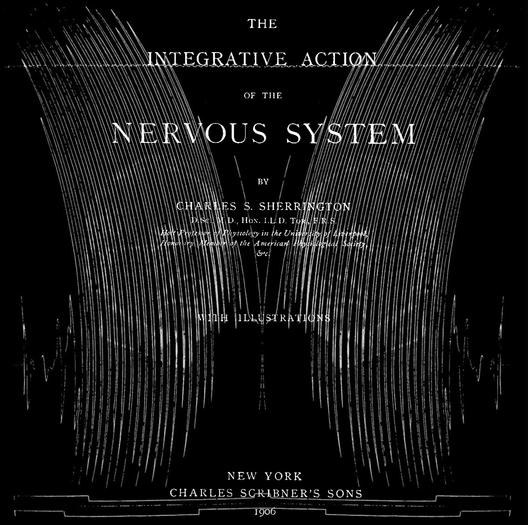Charles Scott Sherrington1857–1952
Neuroscience emerged from the biological sciences because conceptual building blocks were isolated, and the ways in which they can be arranged were explored. The two foundations on which the structure could be securely built were the cell and neuron doctrines. Electrical stimulation of the brain represented a novel technique that could disclose functions of the brain. Many others were based on the emerging concept of the nerve cell as the building block of the nervous system. The neuron doctrine was firmly established by evidence about the synapse, the term introduced by Sherrington, who proposed a mode of chemical transmission across the synaptic junctions. Sherrington’s early work was concerned with the knee jerk reflex and then the scratch reflex, and he found similar integrating principles in operation. In his Integrative Action of the Nervous System (which was based on the Silliman Lectures delivered at Yale University in 1904) he mapped out what was known about reflex action and signed the way ahead: ‘“In the multicellular animal, especially for those higher reactions which constitute its behaviour as a social unit in the natural economy, it is nervous reaction which par excellence integrates it, welds it together from its components, and constitutes it from a mere collection of organs an animal individual. This integrative action in virtue of which the nervous system unifies from separate organs an animal possessing solidarity, an individual, is the problem before us”. Such integration was manifest in coordinated activities like maintaining posture and moving, which display reciprocal innervation of antagonistic muscles. Sherrington commenced the book with a statement signalling its conceptual power: “Nowhere in physiology does the cell-theory reveal its presence more frequently in the very framework of the argument than at the present time in the study of nervous reactions”. Sherrington was greatly influenced by the work of Charles Bell, and he dedicated his Integrative Action to Ferrier ‘in token of recognition of his many services to the experimental physiology of the central nervous system’. Although Sherrington examined the coordinated activity of nerve function at relatively low levels this did not prevent him from applying the principles to higher processes, like perception. The final chapter in Integrative Action is concerned with binocular vision; he introduced a technique for intermittent stimulation of each eye independently which shed new light on the integration of signals from each eye. Vision, as a biological process, was one of Sherrington’s abiding interests, as it was a clear example of “matter-mind relation. How is it that the visual picture proceeds – if that is the right word – from an electrical disturbance in the brain?”. Moreover, he predicted that the new century would be increasingly concerned with the functions of the cortex: “It is then around the cerebrum, its physiological and psychological attributes, that the main interest of biology must ultimately turn”. Sherrington was born in London, and studied physiology at Cambridge University under Michael Foster (1836-1907). Following a lectureship at St. Thomas’s Hospital, London, Sherrington was appointed (in 1895) to the Holt chair of physiology at Liverpool University, and from 1913-1935 he held the Wayneflete chair at Oxford. He was President of the Royal Society from 1920-1925. Sherrington wrote extensively, both in his experimental area and more broadly. In addition to these Sherrington wrote on the history of science (particularly on Fernel) and on dualism, as well as publishing a volume of poetry. Sherrington introduced many terms into physiology, including synapse, reciprocal innervation, and the final common path. He distinguished between three classes of receptors: exteroceptors, interoceptors, and those involved in the monitoring of limb and body position which he called proprioceptors. He was awarded the Nobel Prize in Physiology or Medicine in 1932. The portrait of Sherrington was made during his tenure in Liverpool, in 1901, a few years before publication of Integrative Action (from which the motif of a tracing of the scratch reflex was taken). The background is shown in black since the recordings were made on smoked drums, and many of the illustrations in his book are white tracings on a black background.
